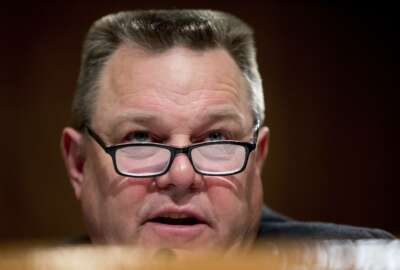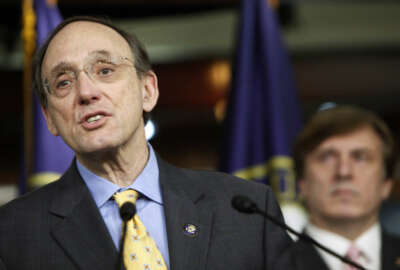
Rep. Walz: VA audit would not be a ‘punitive hammer’
Rep. Tim Walz (D-Minn.) is advocating for an audit of the VA it’s important to make sure money and resources are being applied in the most effective manner.
While reforms at the Veterans Affairs Department have generally garnered congressional support, one lawmaker says it’s not enough to simply throw money and resources at the department’s problems. Rep. Tim Walz (D-Minn.) told the Federal Drive with Tom Temin that it’s also important to make sure that money and those resources are being applied in the most effective manner. That’s why he’s advocating for an audit of the VA.
“I’ve always been a really strong proponent of our federal agencies being as transparent as they possibly can be and making sure that we have a good understanding of where money’s being spent, where we could plus-up budgets,” Walz said. “It’s not an ideology going into it. People think audit, that it’s somehow a negative. It’s not.”
Walz has also pushed for an audit of the Defense Department, which is now underway for the first time in its history.
He said that short-term reauthorizations mixed with spending from reform bills have created a murky environment where it’s tough to know exactly how much, or on what, the government is spending. Walz said he wants to get a better grasp on the efficiency of seeing patients at the VA, and hopes to work with the department, not against it, in order to see how to better target spending.
Walz said an audit should be seen as a tool of efficiency, not punishment.
“I want to be very clear. A lot of people, when they see Congress starting to audit something, it’s seen as a punitive hammer. That was not our goal,” Walz said.
He said the issue is that the VA’s budget has significantly increased over recent years. And that’s been necessary, he said, due to multiple factors, including injuries stemming from current conflicts and the aging population of Vietnam veterans.
“And yet, during that time, we haven’t provided enough data to show where those taxpayer dollars are doing much good,” Walz said. “And I believe they are doing good. We just need the data to show it.”
For example, the Veterans Choice Act is one that Walz said could use some more scrutiny regarding how funding is being spent. He said it was hastily created, networks of providers were not developed, and no one really has any idea how much it costs.
That said, Walz does support the Choice Act, because he said the VA needs the hybrid model to successfully provide care. Vets, especially those in rural communities, need consistent care in close proximity to their homes, and while the VA doesn’t always have the capacity to provide that, Walz said privatization is not the answer either.
“Veterans are almost unanimously opposed to that. They understand the specialty care and the research delivered to the VA is second to none. They understand that they were guaranteed this care. And they also understand that there’s not a magic fix in the private sector. A lot of times we get caught in debating VA health care outside of broader health care,” Walz said. “And the answer is not private sector or all VA, it’s a hybrid vision of it, and that’s where Choice is the sweet spot.”
Walz said the VA needs to focus on interoperability to make its health care more efficient. It makes no sense, he said, that veterans have to drop out of the military health system only to have to turn around and expend energy to get into VA’s. It’s much smarter to have the records transfer automatically.
Walz said the VA is much more transparent than the private sector in many cases, including medical outcomes and business transactions. But one function of the VA that could benefit from more transparency and efficiency is human resources.
“If I had to give my assessment, the weakness in the VA’s system is the very weak — and in many cases non-existent — HR system,” Walz said. “It’s more archaic, it’s very hierarchical. Then you get these situations where you get a demonization of workers, especially senior level workers who need to be demonized at times, but many times do not. And I think it’s because they’re making decisions that should be handled by a professional HR, handled by policies more. So my transparency pushes have almost all focused on that ability.”
He said that time and lack of transparency have contributed to a myth that federal workers cannot be fired or disciplined. VA’s lack of structured HR can lead to dysfunction and feeds into an anti-government narrative, he said.
That can make it difficult to hire and retain qualified employees, which is bad for the VA in the long run, because it costs a significant amount of money to hire and train new people. More transparency can help the effort to keep good employees by giving the public the full facts, letting them see what’s working, and combating that narrative of dysfunction and lack of accountability.
Copyright © 2025 Federal News Network. All rights reserved. This website is not intended for users located within the European Economic Area.
Daisy Thornton is Federal News Network’s digital managing editor. In addition to her editing responsibilities, she covers federal management, workforce and technology issues. She is also the commentary editor; email her your letters to the editor and pitches for contributed bylines.
Follow @dthorntonWFED





